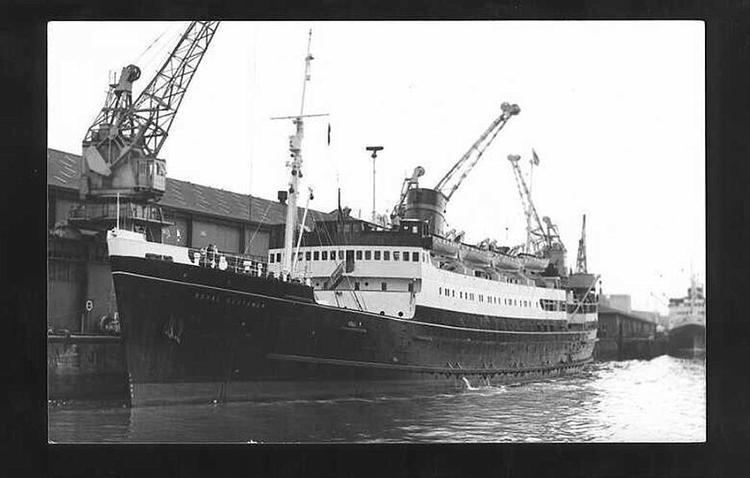Name HMS Royal Scotsman Completed 29 May 1936 Launched 11 March 1936 | Yard number 964 Acquired October 1940 Builder Harland and Wolff | |
 | ||
Honours andawards Atlantic 1942Sicily 1943North Africa 1942-43Salerno 1943 Fate Returned to owner, March 1945.Sold 1967, scrapped 1984. | ||
HMS Royal Scotsman was a LSI of the British Royal Navy that served during World War II. A former passenger ferry, she saw action in the Mediterranean during the invasions of North Africa (Operation Torch), Sicily and Italy.
Contents
Construction
The ship was built by Harland and Wolff at Belfast for the Burns and Laird Lines as Yard No. 964. Launched on 11 March 1936, the ship was completed on 29 May 1936 and entered service as MV Royal Scotsman as a passenger and cargo ferry in the Irish Sea, operating between Belfast and Glasgow.
Operational history
Royal Scotsman was requisitioned by the Admiralty in October 1940 for use as a store ship, commissioned as HMS Royal Scotsman, and modified for use as a Landing Ship, Infantry. Work was completed by January 1941 and she prepared for operational service. Most of the ship's company were the original merchant crew who had joined the Navy under T124X engagements (which meant that they could not be transferred to a combat ship), while the captain and some specialist officers were from the Royal Navy or Reservists.
Initially deployed in home waters, in August 1941 she embarked troops at the Clyde for "Operation Grey", a planned occupation of the Azores. After sailing to Scapa Flow to join military convoy WS8C, the operation was cancelled, and Royal Scotsman returned to the Clyde. On 17 September 1941 she joined military convoy WS11X in the Clyde to transport military personnel to Gibraltar, as reinforcements for Malta ("Operation Halberd"), returning to the UK in October to train with Combined Operations personnel.
From January 1942 she took part in extensive exercises for amphibious operations, and on 26 October sailed to Gibraltar as part of military convoy KMF1 for the invasion of North Africa in "Operation Torch". In the early hours of 8 November she landed men of the American 1st Ranger Battalion to capture the port of Arzew, and then was deployed to transport troops and equipment in the western Mediterranean, operating with her sister ship Royal Ulsterman, and the Dutch ships Princess Beatrix and Queen Emma.
In May 1943 she took part in landings on the Italian island of Pantelleria ("Operation Corkscrew"), then on 10 July landed troops on the beach codenamed "Bark South" during the Allied invasion of Sicily. In September she sailed to Tripoli to embark troops, and joined military Convoy TSF1 to land troops at Salerno on the 9th. In November 1943 she returned to the UK.
There is no record of her being deployed in any further operations, though whether the ship was damaged or only used for training purposes is unknown. In February 1945 she was decommissioned and returned to her original owners in March.
Scientology
She remained in service with Burns & Laird until 1967, when she was purchased by the Church of Scientology and renamed Apollo, to serve as flagship of the Sea Org, as well as the residence of Scientology founder L. Ron Hubbard and his family. (Coincidentally, Apollo was of a similar ship type to the USS Algol (AKA-54), an amphibious cargo ship which Hubbard served on from December 1943 to September 1944.) She cruised mostly in the Mediterranean Sea and on the Atlantic coasts of Europe and Africa. Apollo served as the headquarters of the Church of Scientology until the church established its headquarters in Clearwater, Florida in 1975.
Fate
Royal Scotsman/Apollo was scrapped in Texas in 1984.
In popular culture
The hit song Ride Captain Ride, released in 1970 by the rock group Blues Image, tells of a captain's "Mystery Ship". As the song was inspired by L. Ron Hubbard's life at sea, the "Mystery Ship" would be the Apollo.
